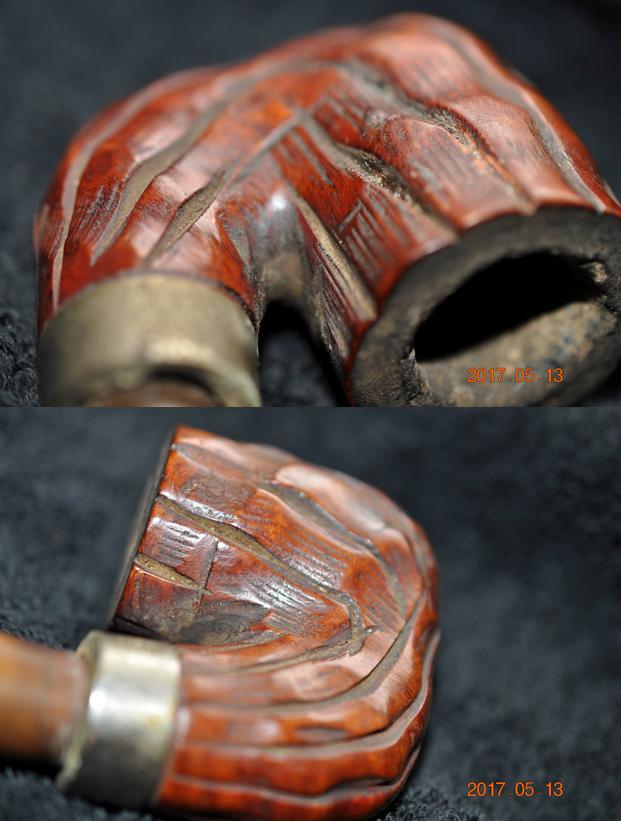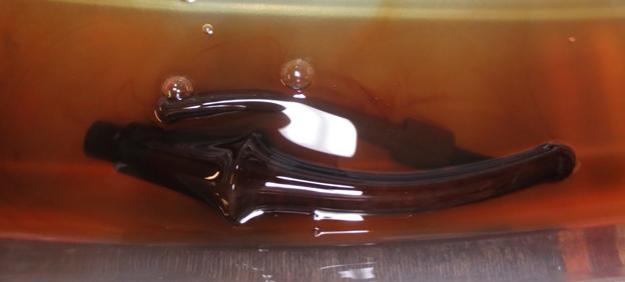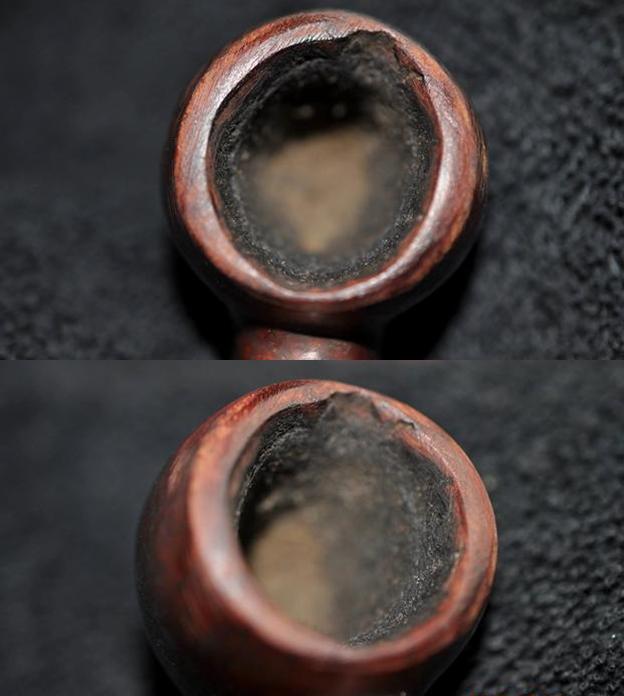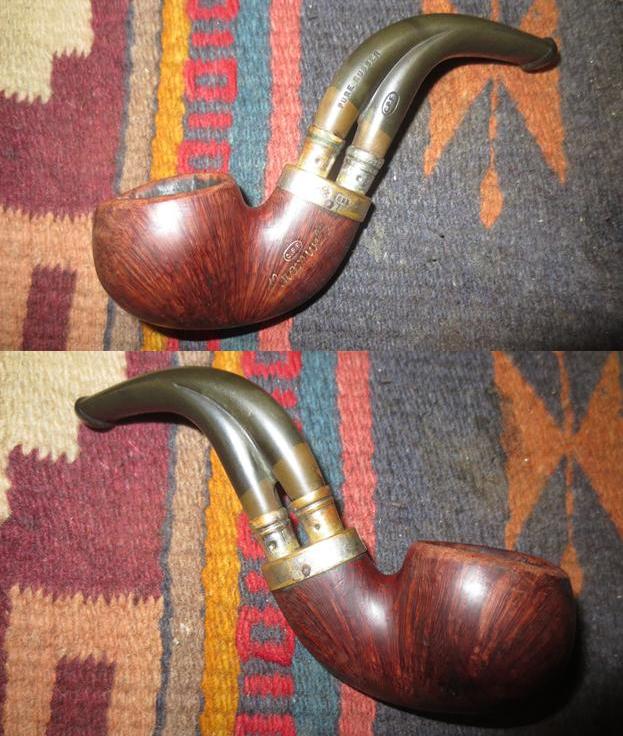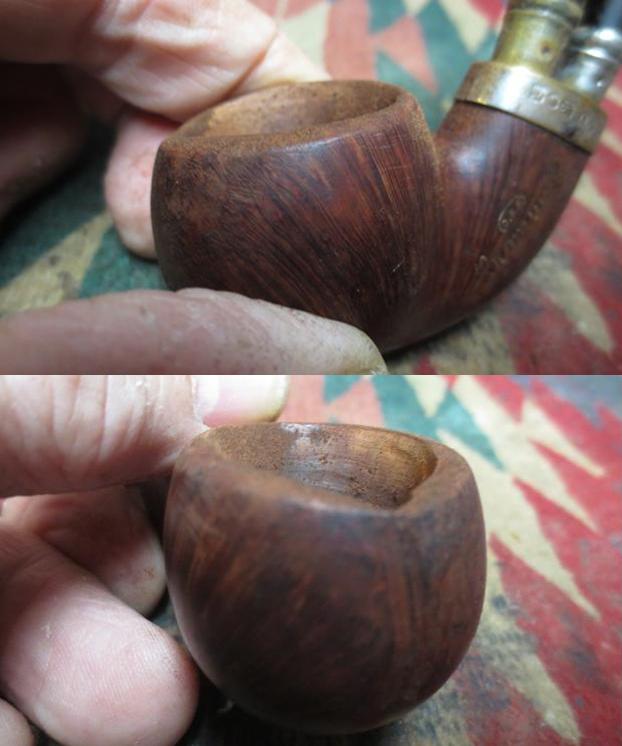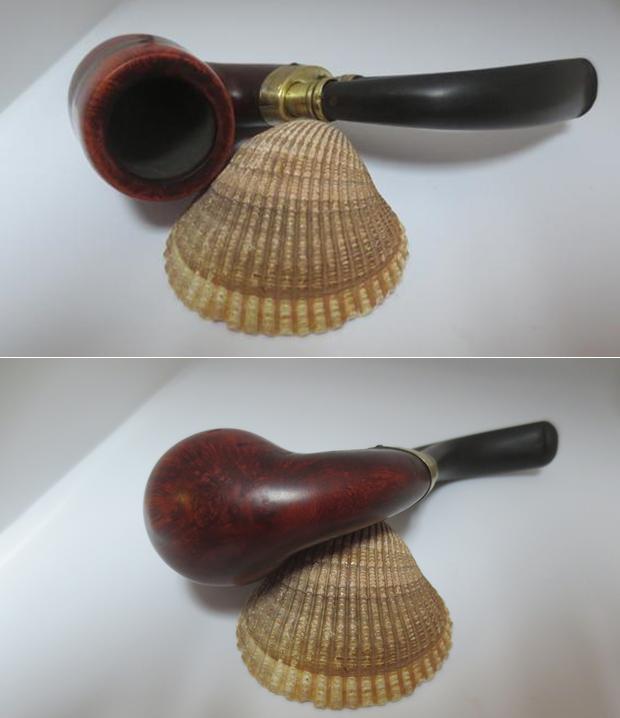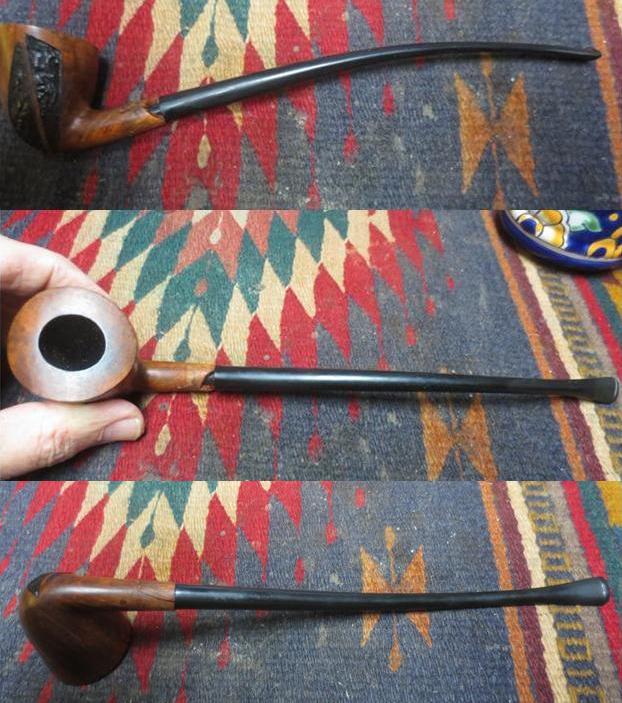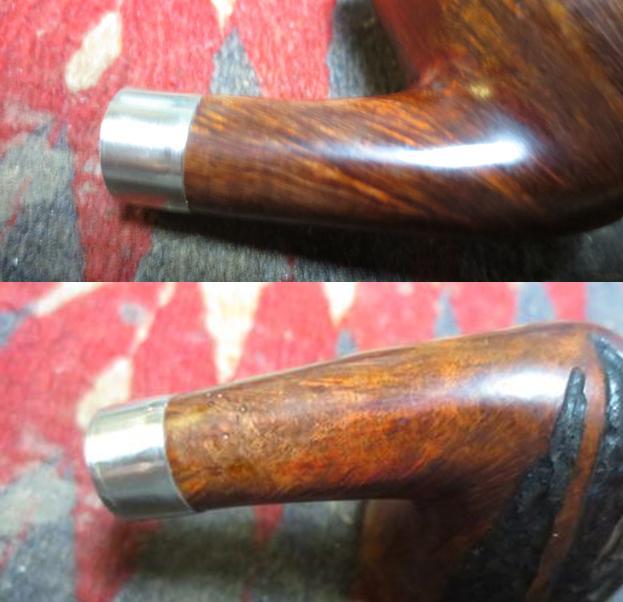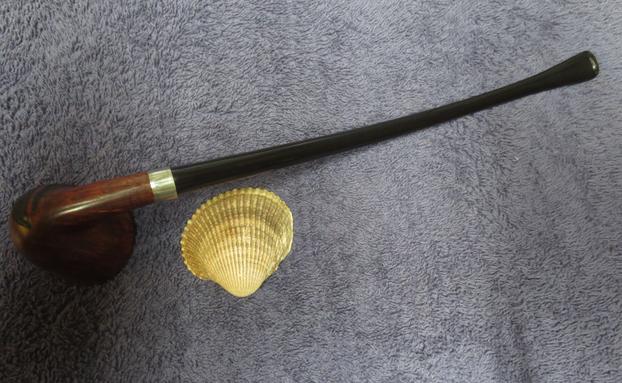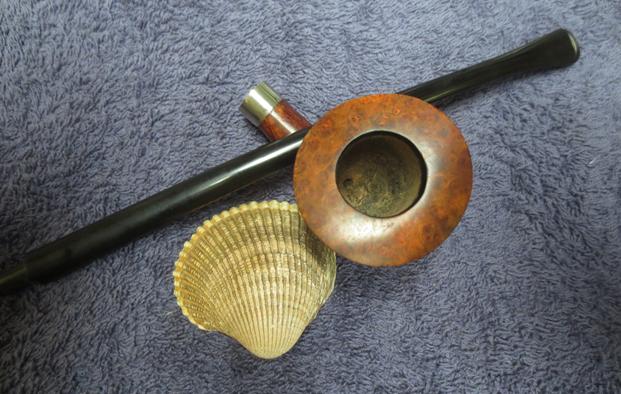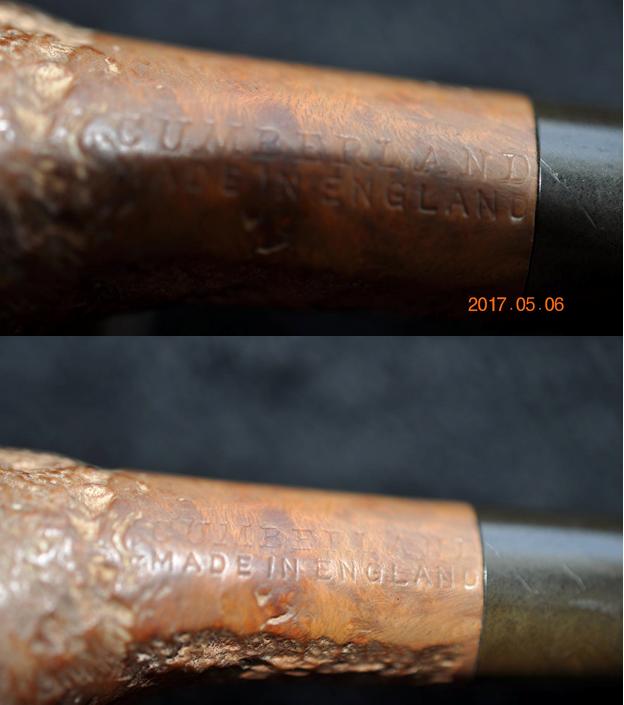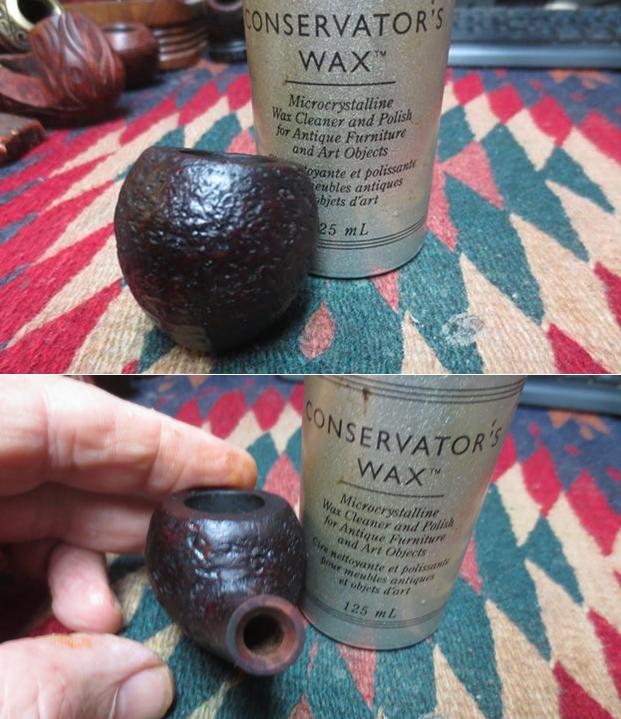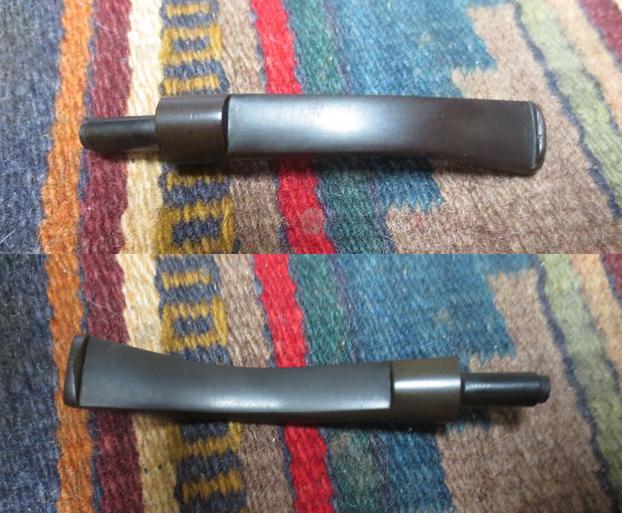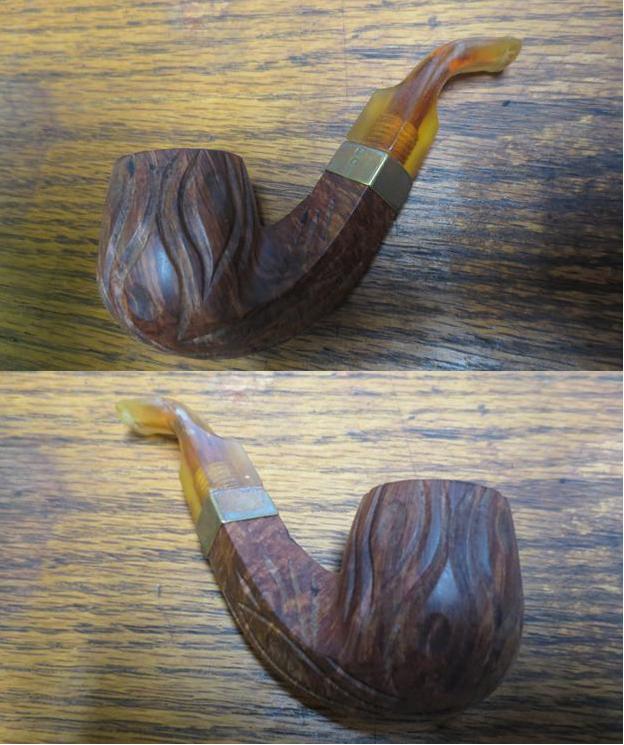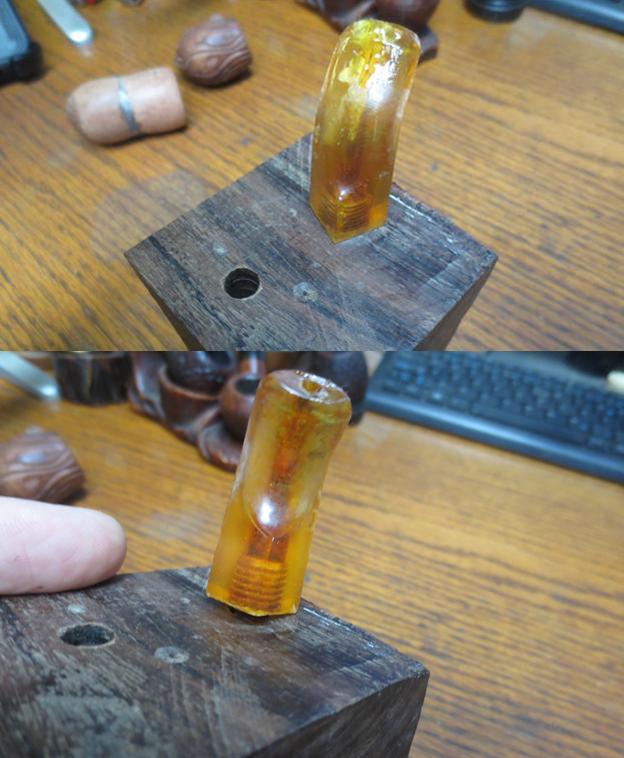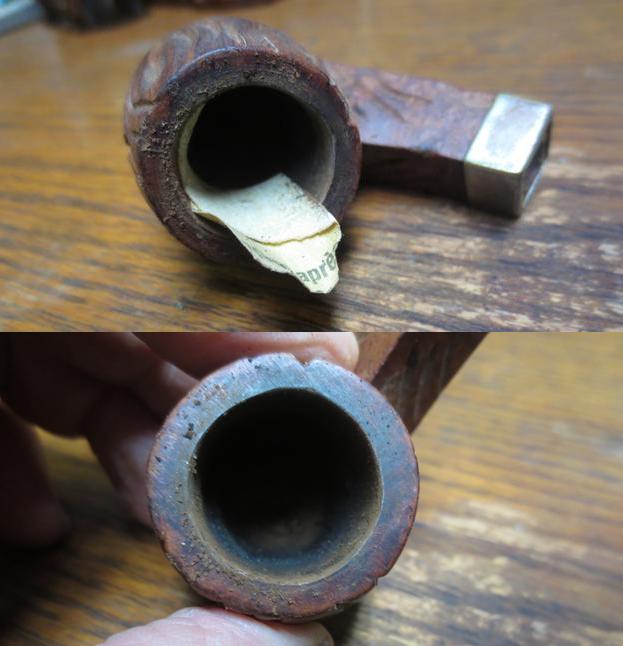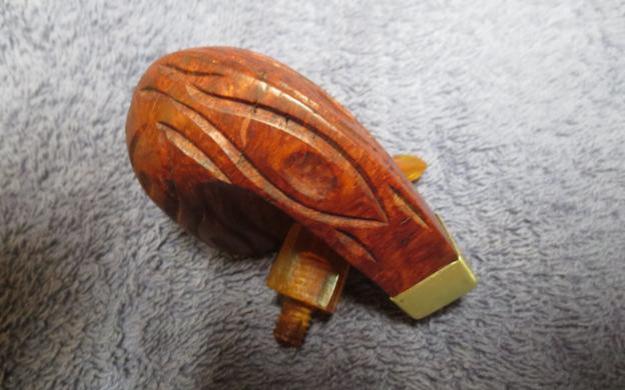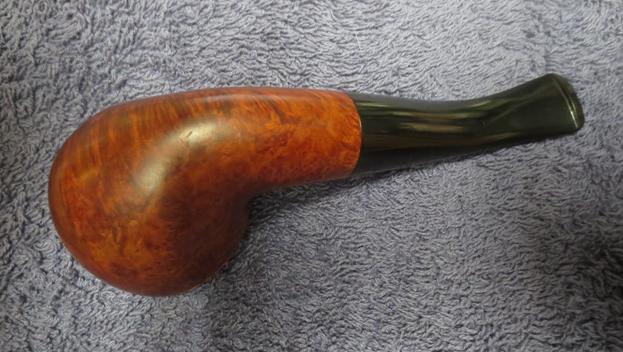Blog by Steve Laug
One of the benefits of the blog is that I meet a lot of really nice people around the world – some of them pipe men and some of them family members. Not long ago I received an email from a fellow on the blog about some pipes that he had. His father had died in June and he was cleaning up the estate and found a box of pipes and accessories. He contacted me to see if I was interested in the lot. He did not want to piece them out; he wanted to sell them all. He sent me a small spread sheet of his Dad’s pipe collection so I could see what was included. He had a column with the stamping information on the pipes and noted any issues that he saw. We talked a few times on the phone about the condition of each pipe and I really enjoyed meeting and talking with him. We emailed back and forth and I called him several times. We chatted a bit about what he wanted to get for the collection in terms of a price and after discussing it with his wife and family we arrived at a fair price for the collection. He surprised me by adding all of the accessories along with the pipes as well as two pipe racks. I transferred the payment to him and the package was sent to my brother Jeff. It is simpler than sending it to Canada so it worked well for the seller to send it there.
We emailed back and forth and I called him several times. We chatted a bit about what he wanted to get for the collection in terms of a price and after discussing it with his wife and family we arrived at a fair price for the collection. He surprised me by adding all of the accessories along with the pipes as well as two pipe racks. I transferred the payment to him and the package was sent to my brother Jeff. It is simpler than sending it to Canada so it worked well for the seller to send it there.
When the package arrived in Idaho Jeff messaged me and said it was there. He took photos for me of the unpacking process so I could see what was there. This is the one thing I miss being far away – I don’t get the sense of surprise that comes as each pipe is unwrapped. No matter how well they have been described or how many photos have been included there is nothing quite the same as going over each piece in person.
Even though the U-Haul box says it is small it was a large box and well packed. The racks and surprises were packed in paper and protected by the crumpled packing materials. The pipes were individually wrapped in bubble wrap.
 Jeff unwrapped the two pipe racks and took photos of them for me (Understand – the photos were coming on messenger as soon as he unwrapped them so I was virtually experiencing the thrill of each piece he took out of the box). The first rack was a 9 pipe circular rack with room in the middle for a humidor (which was missing). It appeared to be made of walnut and was in good condition. The second rack was a 12 pipe rack and was more worn. It too was probably walnut but had a dark opaque stain on it.
Jeff unwrapped the two pipe racks and took photos of them for me (Understand – the photos were coming on messenger as soon as he unwrapped them so I was virtually experiencing the thrill of each piece he took out of the box). The first rack was a 9 pipe circular rack with room in the middle for a humidor (which was missing). It appeared to be made of walnut and was in good condition. The second rack was a 12 pipe rack and was more worn. It too was probably walnut but had a dark opaque stain on it. The next item out of the box was a mysterious cedar cigar box held closed by a rubber band. This was the surprise I had not expected in the lot. I could not wait to see the next photo and know what was in the box. I don’t know about you but when I find this kind of closed box I have all kinds of notions as to what may be inside and over the years most of those notions have been realized.
The next item out of the box was a mysterious cedar cigar box held closed by a rubber band. This was the surprise I had not expected in the lot. I could not wait to see the next photo and know what was in the box. I don’t know about you but when I find this kind of closed box I have all kinds of notions as to what may be inside and over the years most of those notions have been realized.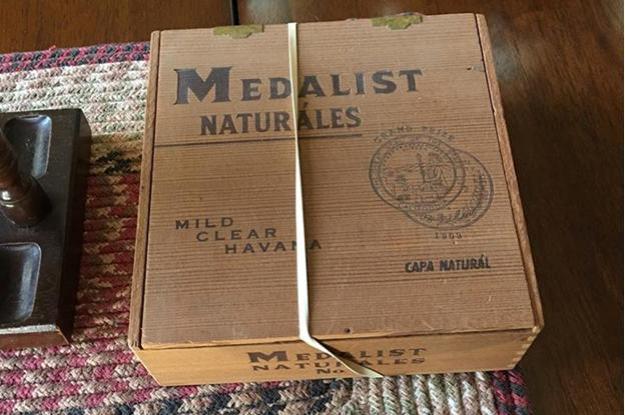 Jeff removed the rubber band and opened the lid. He took a photo of the contents inside without going through them so I could see what he saw. I could see a lot of different items from pipe knives to reamers to brushes to mysterious little tubes in the top right corner. Inside the box, before he could see the contents, he had to remove some leather pipe bags. These were stamped Amphora Xtra Holland.
Jeff removed the rubber band and opened the lid. He took a photo of the contents inside without going through them so I could see what he saw. I could see a lot of different items from pipe knives to reamers to brushes to mysterious little tubes in the top right corner. Inside the box, before he could see the contents, he had to remove some leather pipe bags. These were stamped Amphora Xtra Holland. Jeff unpacked the surprise box slowly and photographed each step of his discovery. I have already written a blog on what the box contained so I won’t repeat it here. Suffice, to say that there were some reamers and pipe parts that I have been looking for and not found for quite a few years. Here is the link to the blog. https://rebornpipes.com/2017/08/22/sometimes-when-you-buy-an-estate-there-are-unexpected-additions/ The photos that follow tell the story better that words.
Jeff unpacked the surprise box slowly and photographed each step of his discovery. I have already written a blog on what the box contained so I won’t repeat it here. Suffice, to say that there were some reamers and pipe parts that I have been looking for and not found for quite a few years. Here is the link to the blog. https://rebornpipes.com/2017/08/22/sometimes-when-you-buy-an-estate-there-are-unexpected-additions/ The photos that follow tell the story better that words. 

 With the mystery box unpacked and inventoried Jeff went on to unpack the carefully wrapped pipes. He took photos of the lot once he had removed them from the box and before he unwrapped them. The suspense was building for me. I wondered how each pipe looked. Descriptions and spread sheets can only tell so much but when you have the pipe in hand you know far more.
With the mystery box unpacked and inventoried Jeff went on to unpack the carefully wrapped pipes. He took photos of the lot once he had removed them from the box and before he unwrapped them. The suspense was building for me. I wondered how each pipe looked. Descriptions and spread sheets can only tell so much but when you have the pipe in hand you know far more. The seller had put a small paper label on each pipe describing what he found as he went over them for me. The descriptions matched the spread sheet that he had emailed. Some of the pipes had pipe cleaners in the stem and shank. The photos show each set of pipes as he unwrapped them. As I saw them I was getting more excited about them. They were dirty and had cake in the bowls and wear on the stem but I was happy to see that the work needed was less than expected.
The seller had put a small paper label on each pipe describing what he found as he went over them for me. The descriptions matched the spread sheet that he had emailed. Some of the pipes had pipe cleaners in the stem and shank. The photos show each set of pipes as he unwrapped them. As I saw them I was getting more excited about them. They were dirty and had cake in the bowls and wear on the stem but I was happy to see that the work needed was less than expected.

 The next photo is a little blurry but I have included it because I think it adequately captures the excitement of unwrapping each successive package. There were some very nice old pipes in this lot. Some were average and some were above average. It was going to be a fun lot to work on.
The next photo is a little blurry but I have included it because I think it adequately captures the excitement of unwrapping each successive package. There were some very nice old pipes in this lot. Some were average and some were above average. It was going to be a fun lot to work on. Jeff took a photo of the rim top and bowl to give me a better idea of the condition of the pipes. There were no surprises here – mostly what I expected tired and dirty pipes that needed TLC.
Jeff took a photo of the rim top and bowl to give me a better idea of the condition of the pipes. There were no surprises here – mostly what I expected tired and dirty pipes that needed TLC. 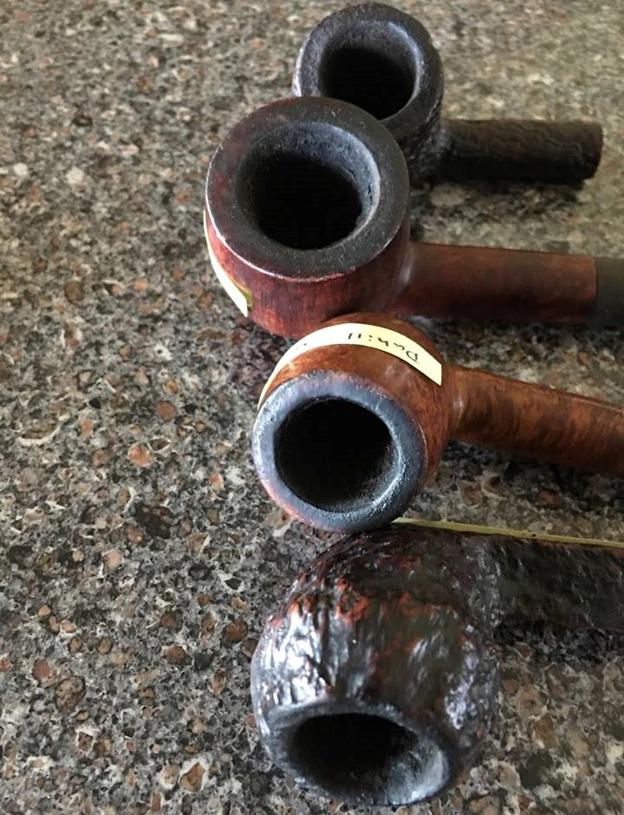


 Jeff took a series of photos of side view of the pipes as a group. The pipes looked like they were in good shape.
Jeff took a series of photos of side view of the pipes as a group. The pipes looked like they were in good shape.
 He set up all of the pieces of this purchase on his table and took a series of photos of the whole together – pipes, accessories, reamers and racks. It looks very good. I am looking forward to working on this batch of pipes and restoring them to their former glory.
He set up all of the pieces of this purchase on his table and took a series of photos of the whole together – pipes, accessories, reamers and racks. It looks very good. I am looking forward to working on this batch of pipes and restoring them to their former glory.
 It is a nice batch of pipes and I am excited to work on them. The mix of brands is interesting and will make it fun as well. The additional surprise of the reamers, pipe knives and parts is a great bonus. I could not be happier with this estate purchase. I send my thanks to the seller and posthumously to his father the pipe man. I will think of you both as I work on each one.
It is a nice batch of pipes and I am excited to work on them. The mix of brands is interesting and will make it fun as well. The additional surprise of the reamers, pipe knives and parts is a great bonus. I could not be happier with this estate purchase. I send my thanks to the seller and posthumously to his father the pipe man. I will think of you both as I work on each one.




















